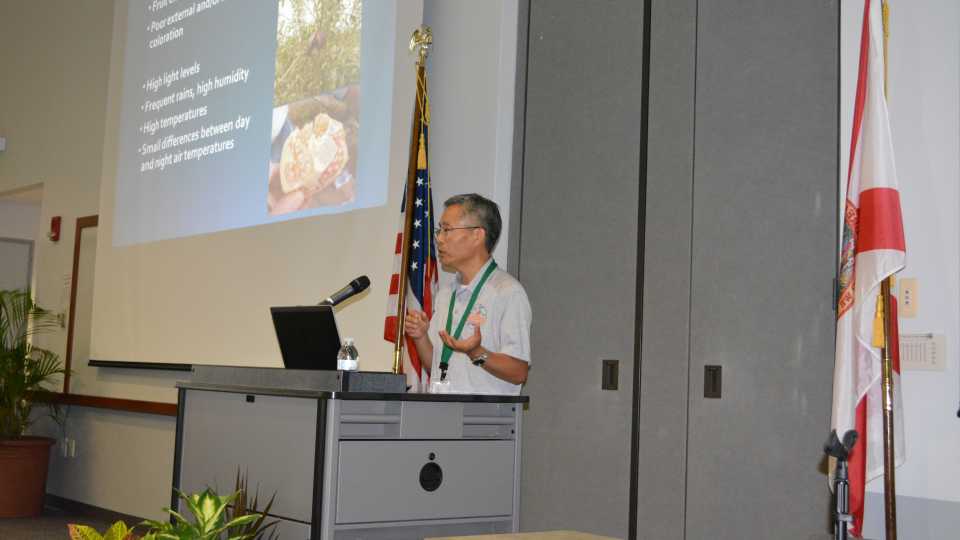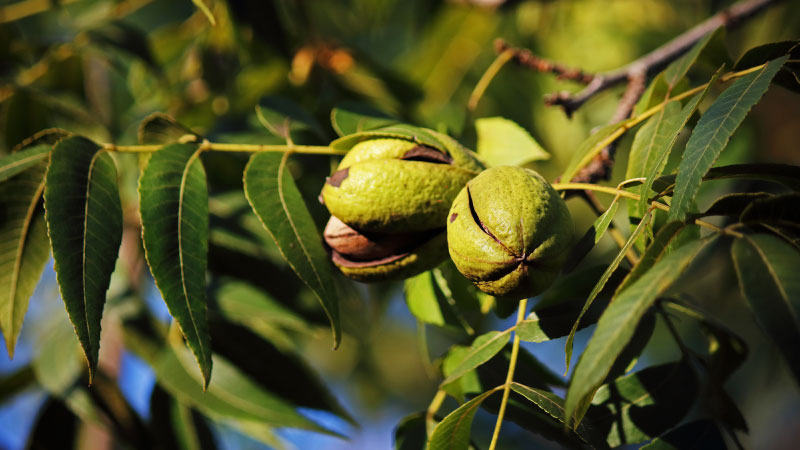Excitement Brewing Over Hops Crop Potential In Florida
UF/IFAS scientists will work with a $158,000 grant from the Florida Department of Agriculture and Consumers Services to research and develop a viable hops crop for the state.
Hops are not only being vetted as an option for growers seeking another alternative crop, but also as a way to tap into the micro-brewing industry, which is growing by leaps and bounds in Florida and across the U.S.
Brian Pearson, an assistant professor of environmental horticulture at the UF/IFAS Mid-Florida Research and Education Center in Apopka, is collaborating on the hops research project with Zhanao Deng, a principal investigator and professor of environmental horticulture, and Shinsuke Agehara, an assistant professor of horticultural sciences, both with the UF/IFAS Gulf Coast Research and Education Center in Balm.
“We hope to find out how well these hop varieties can grow in Florida, their yield potential, resistance to downy mildew disease, and insect problems,” Deng said.
Deng led a presentation during the 2015 Florida Ag Expo, introducing this subject to an audience full of interested growers.

UF/IFAS’ Zhanao Deng led a presentation on alternative crops. Pomegranates, blackberries, and even hops were up for discussion. Photo by Paul Rusnak
Craft beer produced and sold in Florida accounted for $875.9 million in 2013, Deng said. Production of Florida craft beer has increased nearly 10-fold in the last two years, from about 100,000 barrels per day to more than 1 million, Pearson said. Craft breweries have nearly tripled in Florida in the last two years – from 66 in 2013 to 182 in 2015.
Those craft breweries will probably import about 2 million pounds of hops and hops products this year from places like Washington, Oregon, and Germany, said Simon Bollin, agribusiness development manager with the Hillsborough County Economic Development Department, who’s working with UF/IFAS researchers on the hops project.
A microbrewery produces a maximum of 15,000 barrels, or 460,000 gallons of beer per year, and at least 75% of that beer must be sold outside the brewery. A craft brewery brews no more than 2 million gallons per year and is independently owned. Another distinction is that craft breweries’ beer must contain at least 50% traditional malt, rather than oats, barley, and wheat.
The industry has a $2 billion-a-year impact on Florida’s economy, according to the Brewers Association.
Most of the calls Pearson gets about hops are from Central Florida growers whose citrus crops are not growing well and who have tried other alternative crops. But they also want to know whether they can make a profit from hops. Pearson tells them he can’t answer that yet, but he’s hopeful.
The UF/IFAS-led study will include surveying microbreweries to see what hop varieties interest them, testing 10 to 30 hop varieties, testing chemical and sensory qualities – all of which will give researchers a good idea whether the crop is viable in Florida.
As it stands, about 70% of American hops is grown in the Yakima Valley in Washington State. UF/IFAS researchers hope to bring locally grown hops to microbreweries in Florida. The Sunshine State doesn’t grow wet hops, and they’re the key, Pearson said.
“High-end breweries like wet hops,” he said. “We want to show that you can have a Florida wet-hopped beer.”









